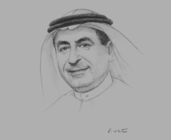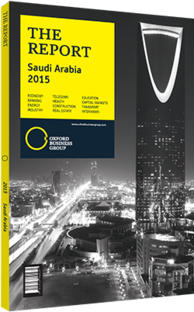Sulaiman bin Abdullah Al Hamdan, President, General Authority of Civil Aviation (GACA): Interview

Interview: Sulaiman bin Abdullah Al Hamdan
How are Saudi Arabia’s airport projects coping with the growing air traffic in the country?
SULAIMAN BIN ABDULLAH AL HAMDAN: GACA has prepared plans for developing its airport network to accommodate the increase in passenger numbers and raise the standard of airport services until 2040. All airports are now either already developed, such as Prince Mohammed bin Abdulaziz International Airport in Medina, or undergoing development, such as the new King Abdulaziz International Airport, of which phase one is expected to be completed in mid-2016, raising its capacity to 30m passengers a year. Phase two will raise this to 45m passengers, and phase three to 80m passengers. The King Khalid International Airport Development Project is also under execution and phase one, which will raise the capacity to 35.5m passengers a year, is planned for completion in 2019. Phase two will raise this to 47.5m.
What is GACA doing to streamline procedures?
AL HAMDAN: GACA holds meetings with different authorities – particularly passports, security and Customs – with the aim of reviewing passenger processing procedures, streamlining operations and ensuring the smooth flow of passengers and cargo traffic in airports, according to international standards. GACA is also eager to upgrade the technical systems used by these authorities, and to provide them with advanced equipment. Ensuring that we have sufficient qualified staff, especially at peak times, is also a priority, as is issuing relevant visas to transit passengers. Moreover, GACA organises specialised training courses in airport security for airport employees and gives them the necessary certificates for carrying out this job. Many officers and employees have already been trained.
Could the Kingdom become an aviation hub?
AL HAMDAN: One of our objectives is to capture a significant share of the region’s air traffic, making Saudi Arabia a major regional hub. To accomplish this, a number of steps have been taken, including several airport development projects. The construction and operation of some of these, such as Prince Mohammed bin Abdulaziz Airport, were assigned to specialised international firms. Some services were also assigned to specialised firms; Swissport International was awarded a ground handling licence. Foreign airlines can operate international flights to and from some domestic airports, and fuel prices were reduced, which will attract traffic.
Where are the biggest privatisation opportunities in the Saudi civil aviation sector?
AL HAMDAN: GACA is adopting a policy of strategic participation from the private sector, aiming to reduce construction, operation and maintenance costs, accelerate efficient project execution, raise the standard of services, promote competition and maximise revenues.
Among the projects carried out under this policy is Prince Mohammed bin Abdulaziz International Airport, the first airport in Saudi Arabia to be constructed and operated by the private sector, through a build-operate-transfer agreement signed in 2012. In addition, the operation of King Abdulaziz International Airport and Taif Airport is being tendered to the private sector.
How can the civil aviation industry contribute to the development of Saudi Arabia’s peripheral areas?
AL HAMDAN: Saudi Arabia’s vast area necessitates the use of air transport, not just for domestic and international travel, but also as it is one of the key drivers of the Kingdom’s economic development. Air transport has a favourable impact on other sectors, such as education, commerce, industry, agriculture and health, as all these sectors greatly rely on civil aviation.
Therefore, Saudi Arabia is keen to make its network of 27 airports connect all of the country’s regions. Some 70% of populated areas currently lie within a 70-km radius of an operating airport. The Kingdom’s more remote areas have greatly benefitted from the expansion of civil aviation, in terms of catching up with the cultural development taking place across Saudi Arabia.
You have reached the limit of premium articles you can view for free.
Choose from the options below to purchase print or digital editions of our Reports. You can also purchase a website subscription giving you unlimited access to all of our Reports online for 12 months.
If you have already purchased this Report or have a website subscription, please login to continue.

